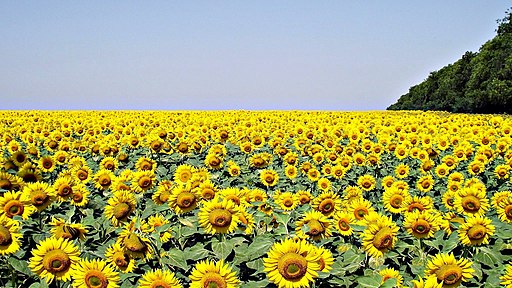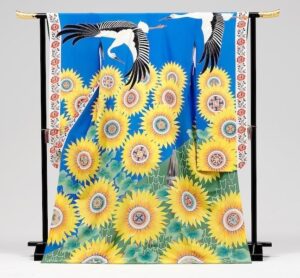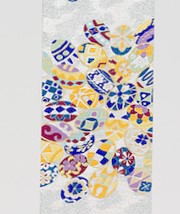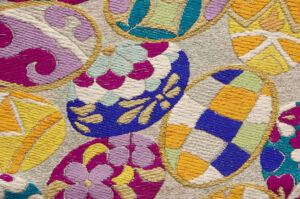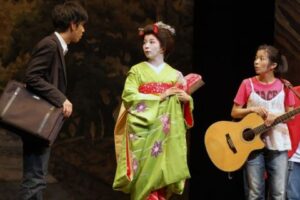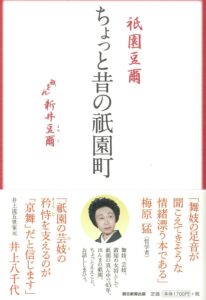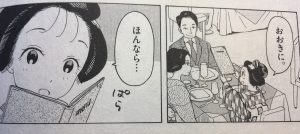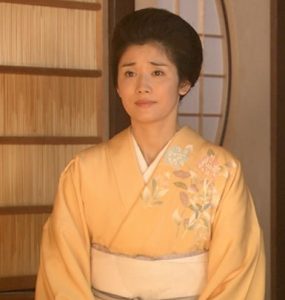It’s Girls’ Day, time for the “Doll Festival.” A day to celebrate girls at play, having fun with other girls, and enjoying the coming of spring. In Japan, I often had the privilege of visiting homes to see the classic doll arrangement and hear stories about how friends had collected their dolls.
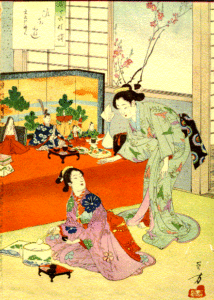
Hina doll celebration by Mizuno Toshikata, ca.1900.” Judy Shoaf.
If only children everywhere had the freedom to play with dolls, today. The fear and violence gripping Ukraine remind us of children there and around the world robbed of their safety.
Looking for connections among Ukraine and maiko, I discovered that in 1971, Kyoto and Kyiv became sister cities. “Ukrainian folk music groups have held joint concerts with Kyoto citizens, while tea ceremony practitioners and teachers from Kyoto have visited Kyiv,” according to The Japan Times.
In the wake of the Fukushima nuclear meltdown, Japanese reached out to the citizens of Odessa, Ukraine, survivors of the Chernobyl tragedy, who, in turn, sent donations to Japan. The Washington Post reports that in recent days, protests in Japan, including in Kyoto, and throughout Asia have voiced support for Ukraine. Japanese are also sending donations to Ukraine.
Today’s post, “The Kimono for Ukraine” takes us back to a recent and hopeful moment for world peace. For this post, I tried to learn about auspicious Ukrainian symbols — sunflowers, storks, and Easter eggs.
The Kimono Project – Art Transcending Boundaries
Initiated in 2014 by Imagine One World Organization, the Kimono Project aimed to honor the 2020/21 Olympic and Paralympic Games held in Tokyo. Yoshimasa Takakura, a third-generation kimono designer from Fukuoka, headed the project. Initially, he wanted to see 206 kimono, one for each country participating in the Olympics. In the end, it appears that 213 kimono were created.
According to Inspirations, Takakura came up with the Kimono Project idea after participating in a fashion show in Paris in 2013. Here, he showed kimono designs that blended 18th century Japanese flower motifs by Itō Jakuchū with art nouveau. This moment inspired Takakura to imagine a transnational project honoring diverse cultures through kimono.
You can see the kimono displayed online: https://www.kimono.iow.or.jp/
The Project was awarded the Diplomas of Honor from the Ministry of Culture, Youth, and Sports in Ukraine (Wikipedia).
The Kimono for Ukraine Features Sunflowers
The sunflower, Ukraine’s national flower,
is becoming a global symbol of solidarity
Washington Post, March 2, 2022
Now “a global symbol of resistance, unity and hope,” many are wearing sunflowers (real and artificial) to show their support for Ukraine (Washington Post). First Lady Jill Biden wore a blue dress with sunflower at one cuff to the State of the Union address on March 2. Many members of Congress also wore sunflower charms or the yellow and blue colors of Ukraine.
We see these colors, and of course, glorious sunflowers on the kimono for Ukraine designed by Masanobu Oota.
The Kimono for Ukraine Designed by Masanobu Oota 太田正伸
View online at https://kimono.piow.jp/nation/169.html
Notice the storks on the kimono, magical symbols of prosperity and protection in Ukraine. We see embroidered flowers on the kimono sleeve (see detail below) as found in Ukrainian folk costumes.
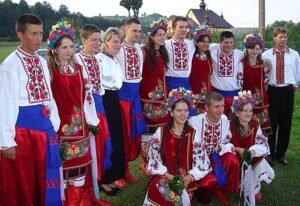
Author Marek Silarski. Ukrainians in from Maramureș Mountains (Inner Eastern Carpathians, north of Romania) wearing the regional folk-costume of Poltava in central Ukraine; photo – village Mokre, 2007. Wikimedia.
Ukrainian Easter Eggs in Obi Designed by Nishijin-Maizuru
Handcrafted with the Nishijin-ori technique, the obi’s motif displays pysanka, Ukrainian Easter Eggs. The Ukrainian Museum explains how in ancient times women and girls would decorate fertilized eggs. Each color and symbol had meaning. No longer considered talismans today, they are appreciated as beautiful art objects.
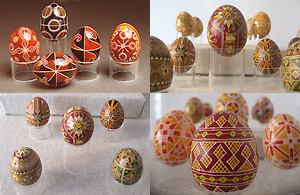
Ukrainian Easter Eggs. The Ukrainian Museum, 2010.
http://www.ukrainianmuseum.org/ex_100306pysanka.html
FEATURED IMAGE: Sunflowers. Odessa, Ukraine. Jul 4, 2012. Author Анатолий Зубанюк.
Wikimedia Commons.
Jan Bardsley, “The Kimono for Ukraine,” janbardsley.web.unc.edu. March 3, 2022.
